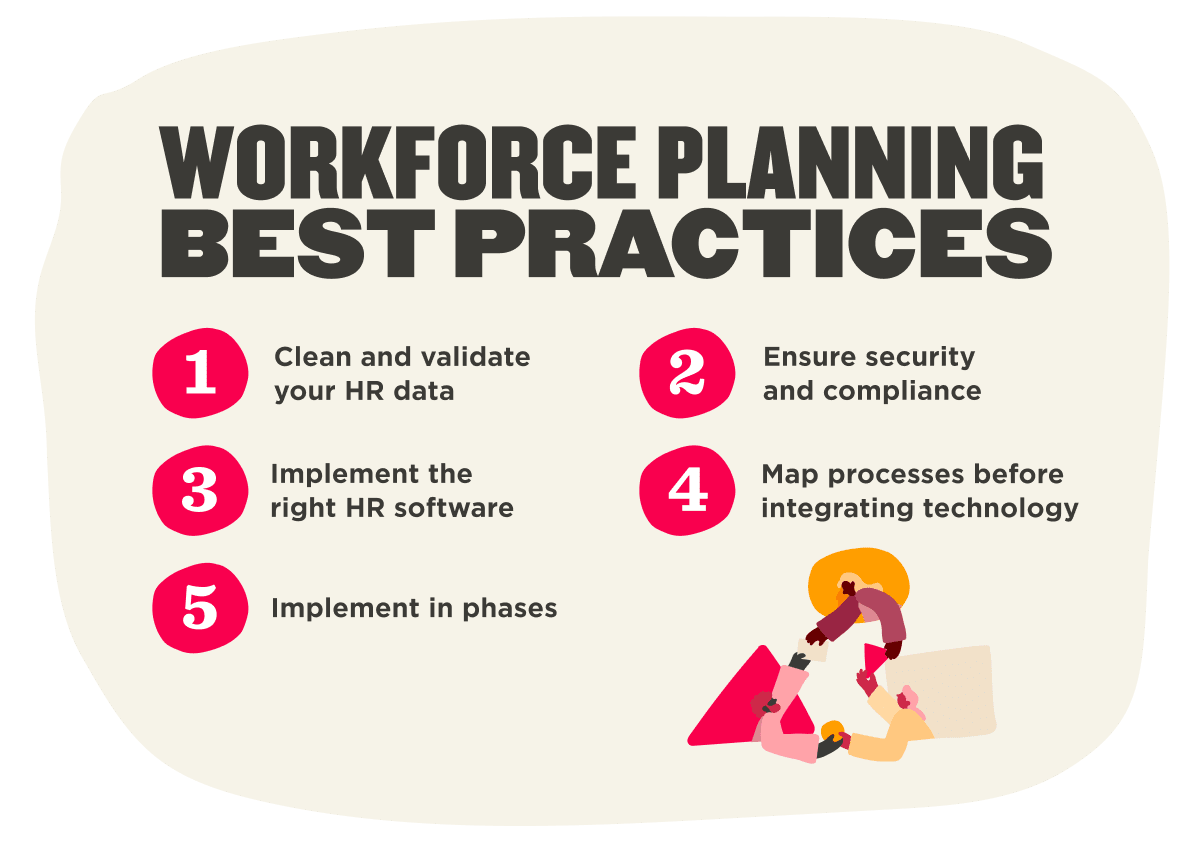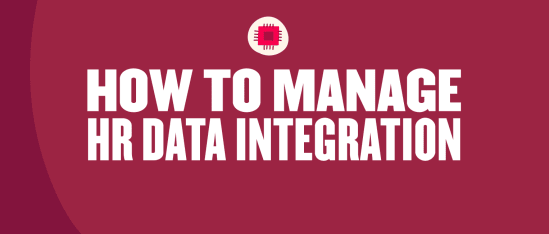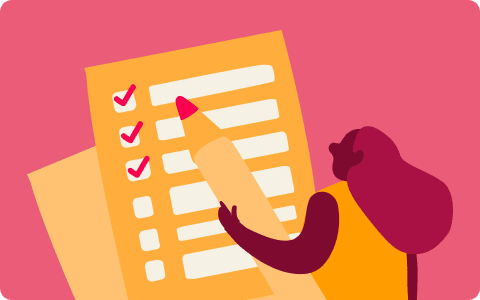Siloed systems can slow down HR teams, creating duplicate work, fragmenting records, and making it harder to see the full picture. This inefficiency takes time away from what really matters: supporting people and driving productivity.
That’s where HR data integration comes in. Connecting HR tools like payroll, performance, and benefits into one streamlined system ensures accurate, real-time information flows across your entire tech stack. And HR teams are taking notice—our recent study found that 69 percent of professionals say integration with other business systems is “very important” when evaluating new HR tech.
In this guide, we’ll explain how HR data integration works, outline the different approaches, and share practical steps to help you build a more connected and efficient HR system.
Key insights
- HR data integration connects various HR tools into a cohesive system, reducing manual errors, streamlining processes, and freeing HR to focus on strategic priorities
- Integrated systems improve team member experiences by automating tasks like onboarding and payroll, which boosts engagement, supports retention, and ensures smoother day-to-day operations
- A phased approach to integration helps manage complexity, delivering quick wins and building momentum for further integration efforts
What is HR data integration?
HR data integration brings together information from different tools into one connected system. These tools can include systems for managing people, hiring, training, and broader business operations.
Why is data integration important for HR?
Data integration plays a key role in helping HR teams operate more efficiently and strategically. A unified view reduces duplication, simplifies day-to-day tasks, and ensures reliable data for confident decision-making. Integrated data allows HR professionals to link people insights to business results and plan effectively for future workforce needs.
For example, connecting hiring and performance data helps identify top talent sources, improve hiring investments, and raise overall workforce quality. Alternatively, syncing engagement survey results with turnover data can uncover early signs of dissatisfaction, helping HR teams take proactive steps to boost retention and wellbeing.
How HR data integration works
Imagine each HR system as a person speaking a different language—they can’t understand each other without a translator. Data integration acts as that translator, helping each system understand and share information automatically and safely.
The key to this communication involves APIs (application programming interfaces). APIs provide the rules that guide software interactions and information sharing. Modern HR platforms include built-in APIs, simplifying connections between systems without complicated coding.
Another important step is data mapping, which is matching information across different systems. For example, data mapping makes sure the name of a team member in your main HR system matches exactly in your payroll system. This prevents mistakes, like someone getting the wrong paycheck.
Effective integration isn’t just about technology—it’s also about making sure the data stays accurate, safe, and supports how your team works. The goal is to help information flow smoothly, making HR processes easier—not harder.

Types of HR data integrations
HR teams can choose from several integration approaches, each offering distinct benefits and trade-offs depending on their organization’s needs and technical capabilities.
- Common storage: Centralizes all HR data in one repository that acts as the source of truth. Ideal for organizations focused on unified reporting and analytics, while still using separate systems for different HR functions.
- Manual integration: Relies on people to move data, usually through spreadsheet uploads. It’s time-consuming and error-prone, but it can work for occasional updates or temporary setups.
- Application-based integration: Uses built-in connectors or app marketplaces. Many HR platforms offer ready-to-use integrations, making it simple to connect tools without deep technical knowledge.
- Uniform access: Creates a shared interface where systems can access data without moving it. Best for complex environments where data must stay in place but remain accessible.
- Middleware integration: Uses dedicated software to translate and transfer data between systems. It’s flexible and powerful—ideal for connecting tools that weren’t designed to work together.
Many organizations implement a combination of these methods, using different approaches for different systems based on their importance, complexity, and frequency of data exchange.
HR data integration use cases and examples
HR data integration transforms everyday HR processes, making them more efficient, accurate, and valuable to your organization.
Onboarding new hires
Integrated HR systems streamline onboarding by automatically sharing new hire information across recruitment, core HR, payroll, benefits, and IT systems. When a candidate accepts an offer, their profile data flows from the applicant tracking system to the HRIS, triggering workflow automations that prepare everything they need from day one.
With effective integration, new hires can complete paperwork digitally before their first day, arrive with their equipment and access ready, and hit the ground running. When onboarding processes are connected, people get up to speed faster and organizations see stronger retention and early productivity.
Workforce planning
Integrated HR data gives HR leaders a full picture of their people—bringing together headcount, turnover, performance, and open roles alongside financial forecasts. With this insight, teams can make smarter, faster staffing decisions and better anticipate future talent needs.
Connected systems also help identify skills gaps, support succession planning, and ensure workforce capabilities align with business goals. Instead of static spreadsheets, workforce planning becomes a dynamic, data-driven process that continuously shapes your talent strategy.
<< Simplify your planning process with these workforce planning templates. >>
Recommended For Further Reading
Payroll and benefits
HR data integration ensures accurate and efficient payroll processing by automatically sharing team member information, time tracking data, and compensation details between systems. When HR and payroll platforms connect seamlessly, changes to a team member’s status, compensation, or benefits are automatically reflected in payroll calculations without manual intervention.
Connected systems also streamline benefits administration by synchronizing enrollment selections, life event changes, and eligibility information across platforms. When a team member makes a benefits selection or experiences a qualifying life event, the information updates automatically in both HR and benefits systems.
Team learning and development
When your learning systems connect with performance data and skills profiles, development programs are smarter and more personalized. If a review highlights a gap, the system can instantly suggest relevant courses or assign training—no manual follow-up required.
This level of integration also improves visibility into learning outcomes. Training records link directly to performance results, helping HR teams understand what’s working. It also keeps certification requirements, deadlines, and career development plans aligned—making learning and development a more strategic part of your people strategy.
Performance management
When performance management connects with core HR, learning, and compensation systems, managers get a full view of each team member’s progress, development, and impact. Goals, competencies, and review data sync automatically across platforms, and performance ratings can feed directly into compensation planning. This connected approach creates a continuous feedback loop where insights fuel development, recognition, and reward strategies that drive the right behaviors.
<< Streamline reviews with these performance management templates. >>
Recruitment
Integrated recruitment systems connect applicant tracking (ATS) with core HR and other platforms, making hiring faster and more efficient. Hiring managers can easily tap into internal talent pools, while job descriptions and requirements stay aligned with your organization’s competency frameworks and career paths.
Once an offer is accepted, candidate data flows seamlessly into onboarding, cutting admin time and helping new hires become productive faster. And with all systems connected, HR teams gain clearer insights into sourcing performance and hiring quality.
Employee engagement and retention
HR data integration supports employee engagement and retention by connecting survey data, performance metrics, and other indicators to identify trends and take proactive action. When engagement platforms integrate with core HR data, organizations can analyze feedback by department, tenure, performance level, or other relevant factors to pinpoint specific improvement areas.
This helps identify retention risks by combining signals from various sources, such as declining performance, missed development milestones, or compensation below market rates. It also enables more personalized retention strategies based on individual preferences and motivators captured across HR systems.
Benefits of smooth HR data integration
HR data integration delivers strategic advantages beyond basic efficiency, transforming how HR operates and contributes to organizational success.
Reduces manual errors
Poor data quality is a significant cause of financial losses. When information updates in one system and flows automatically to others, it maintains consistency and accuracy throughout the HR ecosystem. This prevents issues like incorrect payroll calculations, missing benefits enrollments, or compliance violations.
Improved accuracy builds trust in HR data among stakeholders and enables more confident decision-making based on reliable information.
Streamlines HR tasks
Integration automates routine tasks and eliminates duplicate data entry. HR teams can spend less time updating systems and more time driving strategic initiatives. Tasks like onboarding, status changes, and reporting become faster and easier, freeing up resources for higher-value work.
Supports security and compliance
Proper HR data integration enhances security by reducing the need for manual data handling and implementing consistent access controls across systems. Key compliance areas supported by integrated HR data include:
- Data privacy regulations
- Employment law requirements
- Payroll tax compliance
- Benefits administration rules
- Industry-specific regulations
- Audit and reporting obligations
Centralized requirements ensure updates flow to every connected platform, reducing compliance risks and making regulatory management more straightforward.
Breaks down data silos
Integration eliminates isolated pockets of information by connecting previously separate systems into a cohesive ecosystem. When data flows freely between platforms, HR gains a complete view of the employee lifecycle from recruitment through retirement. This comprehensive perspective enables more holistic analysis and better-informed decisions about workforce management.
Breaking down silos extends beyond HR to connect people data with other business systems like finance, operations, and customer management. These broader connections enable organizations to analyze relationships between workforce metrics and business outcomes, such as the impact of training investments on sales performance or the correlation between engagement scores and customer satisfaction.
Enhances candidate and team member experience
According to our recent survey of 300 HR professionals, more than 72 percent say “ease of use” is the most important factor when evaluating HR technology. Integrated systems create a smoother experience for both candidates and employees by reducing repetitive information requests and streamlining interactions with HR processes.
Integrated systems make self-service HR more seamless. People can update details, enroll in benefits, or request time off through one interface. Behind the scenes, changes sync automatically across all connected systems.
This is especially valuable for benefits administration. Integration ensures accurate deductions, eligibility tracking, and enrollment processing—no manual follow-up needed, just a smoother experience for everyone.
Best practices for HR data integration

Successful HR data integration requires careful planning, execution, and ongoing management. These best practices help organizations maximize the benefits while minimizing risks and challenges.
1. Clean and validate your HR data
Integration is only as strong as the data behind it. Before connecting systems, start with a full audit of your existing HR data to identify duplicates, inconsistencies, and outdated records. Standardize formats for key fields—like names, addresses, and dates—to ensure consistency across platforms.
Establish clear data governance policies that define who owns each data type, what quality standards apply, and how information should be maintained. Use validation rules to catch errors before data enters your systems, and continue running regular audits post-integration to keep everything accurate over time.
2. Ensure security and compliance
As your systems connect, data security becomes even more critical. Build a robust security framework that protects data at every stage—at rest, in transit, and in use. Role-based access controls help limit visibility to only what’s needed, reducing exposure and protecting sensitive information.
Stay ahead of compliance requirements by documenting how your systems handle personal data and ensuring your practices align with relevant regulations. Integrated platforms should maintain audit trails that track who accessed or changed data, giving you a clear record for both internal oversight and external audits.
3. Implement the right HR software
Select a modern HR platform that serves as the foundation of your integrated ecosystem, offering robust integration capabilities out of the box. The best HR software solutions provide both pre-built connectors to popular systems and open APIs for custom integrations. This flexibility ensures you can connect both current and future applications as your needs evolve.
Look for these key features in integration-friendly HR software:
- Pre-built connectors to common HR, payroll, and business systems
- Well-documented APIs for custom integration development
- Flexible data mapping capabilities to handle different field structures
- Strong security features, including encryption and access controls
- Comprehensive integration, monitoring, and error handling
- User-friendly interface for managing integration settings
4. Map processes before integrating technology
Document your current HR processes in detail before selecting integration approaches or technologies. Understanding how information flows through your organization helps identify the most critical integration points and potential bottlenecks. This process-first approach ensures your integration strategy addresses real business needs rather than connecting systems for technology’s sake.
Create visual process maps showing how data should move between systems to support key HR workflows like hiring, onboarding, and offboarding. Involving process owners and end-users ensures you capture formal procedures and informal workarounds that might affect integration success.
5. Implement in phases
Break your integration project into manageable phases rather than attempting to connect everything simultaneously. Start with high-value, lower-complexity integrations that deliver quick wins and build momentum.
Develop a clear roadmap that sequences integration priorities based on business impact, technical complexity, and dependencies between systems. Each phase should include thorough testing, user training, and performance measurement before moving to the next integration.
Unlock the potential of HR data integration
Organizations that embrace HR data integration gain significant advantages in operational efficiency, data quality, and strategic capability. When implemented effectively, comprehensive data integration shifts HR from reactive administration to proactive strategy, creating value throughout the employee lifecycle.
This connected approach helps HR teams deliver better experiences, reduce costs, and contribute more directly to organizational success.
HR data integration FAQs
What is HR system integration?
HR system integration connects your HR tools—like payroll, performance, benefits, and time tracking—so data flows automatically between them. Instead of working in silos, these systems share information in real time, creating a unified HR ecosystem that supports efficiency, accuracy, and better decision-making.
How does an integrated approach to HR support growth?
Integration enables scalable, repeatable processes that grow with your business. It reduces manual work, improves data accuracy, and gives HR leaders full visibility into their workforce. This empowers teams to focus on strategic priorities—like talent development and workforce planning—rather than being bogged down by admin tasks.
What does data integration mean in CRM?
In CRM, data integration means connecting customer data across tools to build a complete, up-to-date view of each customer. The concept is similar in HR—integrating systems to create a holistic view of your people. Just like in CRM, it supports better decisions and more personalized experiences, only for team members instead of customers.
What are some examples of how HR data integration can be used?
Practical examples of HR data integration include:
- Automatically transferring new hire details from recruitment to onboarding and payroll
- Syncing time-tracking data with payroll for accurate compensation
- Connecting performance reviews to compensation planning
- Linking learning records to compliance and career development tracking


